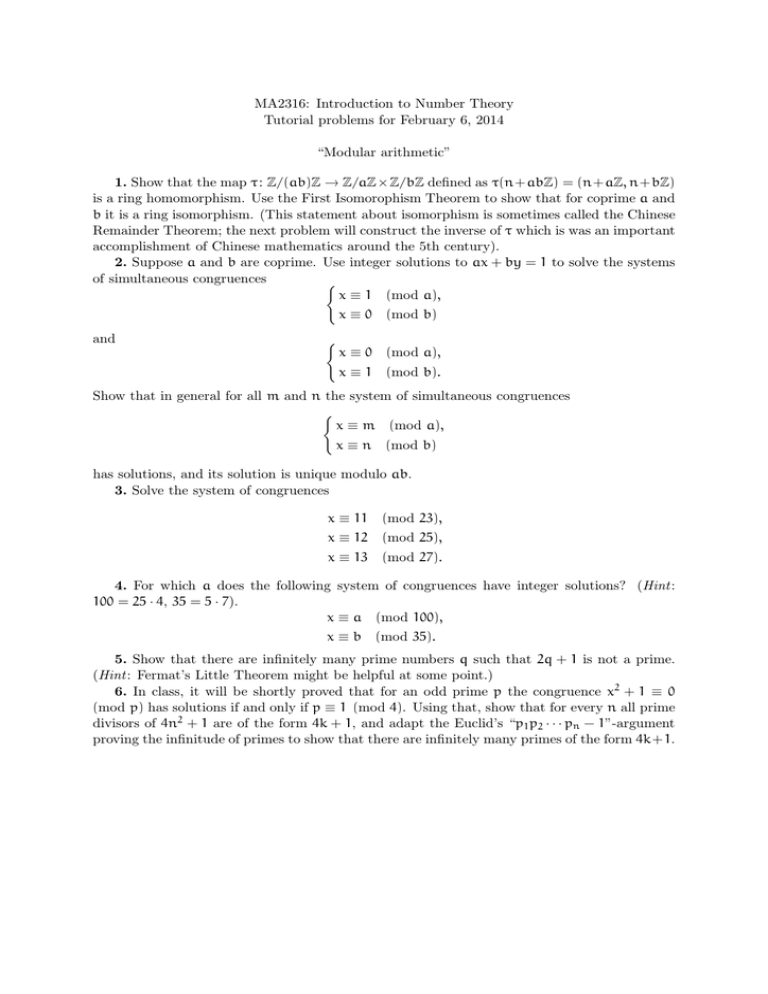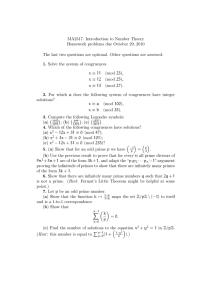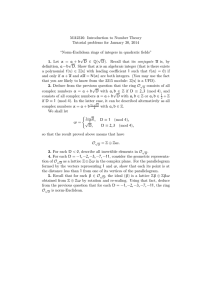MA2316: Introduction to Number Theory Tutorial problems for February 6, 2014
advertisement

MA2316: Introduction to Number Theory Tutorial problems for February 6, 2014 “Modular arithmetic” 1. Show that the map τ : Z/(ab)Z → Z/aZ×Z/bZ defined as τ(n+abZ) = (n+aZ, n+bZ) is a ring homomorphism. Use the First Isomorophism Theorem to show that for coprime a and b it is a ring isomorphism. (This statement about isomorphism is sometimes called the Chinese Remainder Theorem; the next problem will construct the inverse of τ which is was an important accomplishment of Chinese mathematics around the 5th century). 2. Suppose a and b are coprime. Use integer solutions to ax + by = 1 to solve the systems of simultaneous congruences x ≡ 1 (mod a), x ≡ 0 (mod b) and x ≡ 0 (mod a), x ≡ 1 (mod b). Show that in general for all m and n the system of simultaneous congruences x ≡ m (mod a), x ≡ n (mod b) has solutions, and its solution is unique modulo ab. 3. Solve the system of congruences x ≡ 11 (mod 23), x ≡ 12 (mod 25), x ≡ 13 (mod 27). 4. For which a does the following system of congruences have integer solutions? (Hint: 100 = 25 · 4, 35 = 5 · 7). x ≡ a (mod 100), x ≡ b (mod 35). 5. Show that there are infinitely many prime numbers q such that 2q + 1 is not a prime. (Hint: Fermat’s Little Theorem might be helpful at some point.) 6. In class, it will be shortly proved that for an odd prime p the congruence x2 + 1 ≡ 0 (mod p) has solutions if and only if p ≡ 1 (mod 4). Using that, show that for every n all prime divisors of 4n2 + 1 are of the form 4k + 1, and adapt the Euclid’s “p1 p2 · · · pn − 1”-argument proving the infinitude of primes to show that there are infinitely many primes of the form 4k+1.








